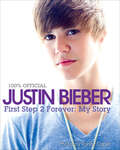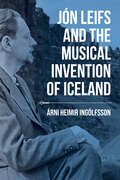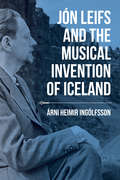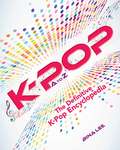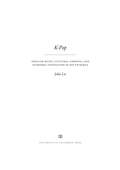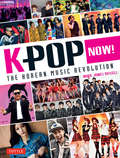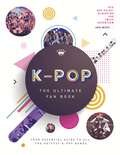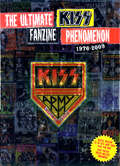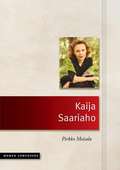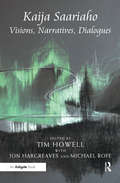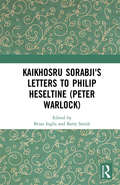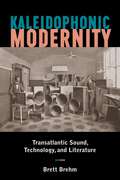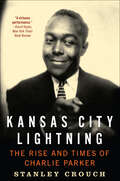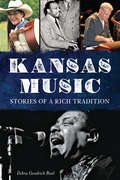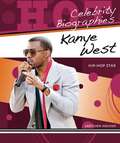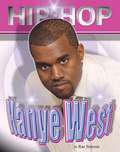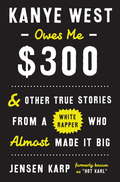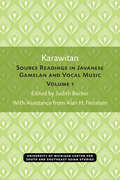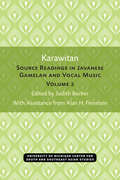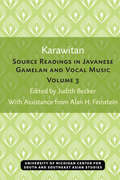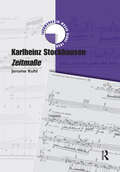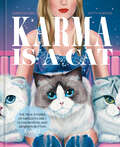- Table View
- List View
Justin Bieber: Just Getting Started (100% Official)
by Justin BieberGet your backstage pass at the ready as you go behind the scenes with Justin Bieber, in his brand new book – 100% official – and discover what life is really like as the world’s hottest pop star! Justin Bieber has come a long way from being your average school kid, busking on the streets of the small town of Ontario, Canada. And he wouldn’t be where he is today without his legion of loyal Beliebers – who have been with him every step of the way on this incredible journey. Now Justin wants to give something back to you, his very special fan – a VIP backstage peek at life behind the scenes, in his incredible new book. Starting from the first night of his debut world tour, Justin invites you to follow him on his rollercoaster ride to superstardom – as he visits the far corners of the globe, makes his very own movie, records his new album, wins numerous awards and pens a bestselling book, to name just a view of the amazing feats he’s achieved over the past few years. Justin Bieber: Just Getting Started is an exclusive peek inside Justin’s phenomenal world. You’ll share in the highs and lows of life on the road, reading Justin’s innermost thoughts and feelings as he navigates life in the limelight. And you’ll hang out with him on the tour bus, and will share in the laughter as he pulls pranks on his roadies! Jam packed full of unseen and exclusive photos taken especially for the book, plus behind-the-scenes gossip, this is the only official book for Justin’s true fans.
Justin Bieber: My Story
by Justin Bieber"It's a big, big world It's easy to get lost in it..." —Justin Bieber, "Up"I love those lines in the lyrics. Sometimes I feel like that's what everyone's expecting. My world got very big, very fast, and a lot of people expect me to get lost in it. I grew up in a small town in Canada. I taught myself to sing in front of my bedroom mirror and to play guitar on a hand-me-down. My mom posted my first videos on YouTube. Never in my wildest dreams did I think that I'd sell millions of records, sing for the president of the United States and sell out a massive arena tour. So no, I'm not lost. Not at all. If anything, onstage in front of my fans, I'm home. I'm found. And that's what this book is about: my journey, from singing and busking on the sidewalk in Stratford, Ontario, to performing and showing my appreciation to millions of fans all over the world for making this dream a reality.My music and lyrics give a glimpse of what's in my heart, but I think this book is a window into my world. In here are hundreds of pictures of me that no one's ever seen before, and I'll tell you about who I was before I joined forces with Scooter Braun and Usher and got a record deal, and who I've become since I've been blessed with the opportunity to share my music with the world. This is my gift to you, the fans who've supported and been with me on this amazing journey every step of the way.
Jón Leifs and the Musical Invention of Iceland (Music, Nature, Place Ser.)
by Árni Heimir IngólfssonA study of the influential Icelandic composer’s career and his work.In Jón Leifs and the Musical Invention of Iceland, Árni Heimir Ingólfsson provides a striking account of the dramatic career of Iceland’s iconic composer. Leifs (1899–1968) was the first Icelander to devote himself fully to composition at a time when a local music scene was only beginning to take form. He was a fervent nationalist in his art, fashioning an idiosyncratic and uncompromising “Icelandic” sound from traditions of vernacular music with the aim to legitimize Iceland as an independent, culturally empowered nation.In addition to exploring Leifs’s career, Ingólfsson provides detailed descriptions of Leifs’s major works and their cultural contexts. Leifs’s music was inspired by the Icelandic landscape and includes auditory depictions of volcanos, geysers, and waterfalls. The raw quality of his orchestral music is frequently enhanced by an expansive percussion section, including anvils, stones, sirens, bells, ships’ chains, shotguns, and cannons.Largely neglected in his own lifetime, Leifs’s music has been rediscovered in recent years and hailed as a singular and deeply original contribution to twentieth-century music. Jón Leifs and the Musical Invention of Iceland enriches our understanding and appreciation of Leifs and his music by exploring the political, literary and environmental contexts that influenced his work.“Composers of fearsome originality seldom have an easy path in the world. Jón Leifs, who translated the landscapes and legends of Iceland into sound, comes vividly to life in this brilliant, panoramic biography, his myriad personal and political conflicts delineated with clarity and candor. A major twentieth-century figure at last receives his due.” —Alex Ross, music critic for The New Yorker and author of The Rest Is Noise“Jón Leifs was the first major Icelandic composer and it is insane that most of his pieces were not performed or recorded until recently. His works were almost just a myth to us Icelanders and therefore this book is so magnificently important. . . . This book is incredibly well written and Árni Heimir’s analysis of the music is deeply satisfying. I listened to each work as it was being discussed, which turned the experience from black and white to color! An extraordinary achievement!” —Björk, singer/songwriter
Jón Leifs and the Musical Invention of Iceland (Music, Nature, Place)
by Árni IngólfssonIn Jón Leifs and the Musical Invention of Iceland, Árni Heimir Ingólfsson provides a striking account of the dramatic career of Iceland's iconic composer. Leifs (1899–1968) was the first Icelander to devote himself fully to composition at a time when a local music scene was only beginning to take form. He was a fervent nationalist in his art, fashioning an idiosyncratic and uncompromising 'Icelandic' sound from traditions of vernacular music with the aim to legitimize Iceland as an independent, culturally empowered nation.In addition to exploring Leifs's career, Ingólfsson provides detailed descriptions of Leifs's major works and their cultural contexts. Leifs's music was inspired by the Icelandic landscape and includes auditory depictions of volcanos, geysers, and waterfalls. The raw quality of his orchestral music is frequently enhanced by an expansive percussion section, including anvils, stones, sirens, bells, ships' chains, shotguns, and cannons.Largely neglected in his own lifetime, Leifs's music has been rediscovered in recent years and hailed as a singular and deeply original contribution to twentieth-century music. Jón Leifs and the Musical Invention of Iceland enriches our understanding and appreciation of Leifs and his music by exploring the political, literary and environmental contexts that influenced his work.
K-POP A To Z: The Definitive K-Pop Encyclopedia
by Bina LeeEverything You Could Possibly Need to Know about Korean Pop Music! K-POP is popping up everywhere! Korea’s infectious and high-energy pop music and entertainment scene is a relatively young phenomenon in the West, and it is rapidly gaining traction. Don’t be left out of the phenomenon. This book will help you learn the K-Pop lingo, culture, and important facts about the top stars of the industry, including: What it means when someone is your “Bias”Who has the best “Eye-smile” in the industryWhat exactly “Call” meansWhy you should avoid being a “Sasaeng fan”When G-Dragon started training for K-Pop stardomThe meaning behind BTS’s nameWhere Wanna One got their startAnd much more! Impress all your “Koreaboo” friends with the knowledge you gain in K-Pop A to Z!
K-Pop
by John LieK-Pop: Popular Music, Cultural Amnesia, and Economic Innovation in South Korea seeks at once to describe and explain the emergence of export-oriented South Korean popular music and to make sense of larger South Korean economic and cultural transformations. John Lie provides not only a history of South Korean popular music--the premodern background, Japanese colonial influence, post-Liberation American impact, and recent globalization--but also a description of K-pop as a system of economic innovation and cultural production. In doing so, he delves into the broader background of South Korea in this wonderfully informed history and analysis of a pop culture phenomenon sweeping the globe.
K-Pop Now!: The Korean Music Revolution
by Mark James Russell"K-Pop Now! [...] features one hundred and twenty-eight glossy pages of Korean pop eye-candy." --KpopStarz.comK-Pop Now! takes a fun look at Korea's high-energy pop music, and is written for its growing legions of fans.<P><P> It features all the famous groups and singers, and takes an insider's look at how they have made it to the top.In 2012, Psy's song and music video "Gangnam Style" suddenly took the world by storm. But K-Pop, the music of Psy's homeland of Korea has been winning fans for years with its infectious melodies and high-energy fun. Featuring incredibly attractive and talented singers and eye-popping visuals, K-Pop is the music of now.Though K-Pop is a relatively young phenomenon in the West, it is rapidly gaining traction and reaching much larger audiences--thanks in large part to social media like Facebook, YouTube and Twitter. Top K-Pop acts get ten million to thirty million hits for their videos--the Girls Generation single "Gee" has over a hundred million views!In K-Pop Now! you'll find:Profiles of all the current K-Pop artists and their hits A look at Seoul's hippest hot spots and hangouts Interviews with top artists like Kevin from Ze:A and Brian Joo A look at future K-Pop idols
K-Pop Style: Fashion, Skin-Care, Make-Up, Lifestyle, and More
by Dianne Pineda-KimEverything About the Fashion and Style of Korean Pop Music Step up and join the K-Pop revolution now! K-Pop, Korea’s infectious and high-energy pop music scene, features fashionable and talented singers and eye-popping visuals. Now you too can learn to dress and style yourself just like the top K-pop artists you love! In this beautiful, photo-filled book, you can read about the influence and inspiration behind a variety of K-Pop artists’ clothing and makeup styles from both their street styles and their most popular music videos and concert tours. Study the full-color photos to get the look and street styles of your favorite K-Pop solo artists and groups, both female and male, including: BTSG-Dragon (GD)RainJessica JungEXOCL (Chaerin Lee)BLACKPINKRed VelvetTWICEAnd MANY More!! With K-POP Style, you’ll discover how to achieve the best outfits and makeup styles of your favorite K-Pop performers and turn heads wherever you go!
K-Pop: Your Essential Guide to the Hottest K-Pop Bands
by Malcolm CroftK-Pop: The Ultimate Fan Book is your essential guide to all the bands, songs and styles behind the most diverse and exciting genre in pop music today. 2018 was a breakout year for K-Pop (Korean Pop) on the global stage, with boy-band BTS reaching number 1 in the UK album chart and selling out live shows around the world including Wembley in June 2019. But there's so much more to this cultural movement. Featuring all the hottest K-Pop bands, from BTS and Red Velvet to TWICE and EXO, K-Pop: The Ultimate Fan Book is packed with dozens of vibrant photos and a colourful, eye-catching design.
K-Pop: Your Essential Guide to the Hottest K-Pop Bands
by Malcolm CroftK-Pop: The Ultimate Fan Book is your essential guide to all the bands, songs and styles behind the most diverse and exciting genre in pop music today. 2018 was a breakout year for K-Pop (Korean Pop) on the global stage, with boy-band BTS reaching number 1 in the UK album chart and selling out live shows around the world including Wembley in June 2019. But there's so much more to this cultural movement. Featuring all the hottest K-Pop bands, from BTS and Red Velvet to TWICE and EXO, K-Pop: The Ultimate Fan Book is packed with dozens of vibrant photos and a colourful, eye-catching design.
KISS Army Worldwide: The Ultimate KISS Fanzine Phenomenon
by Gene SimmonsThe KISS army is everywhere! For 50 years and counting, KISS has been one of the world' s top touring bands. Here for the first time is a visual history of KISS through never-before-seen concert photos and unique fanzine tributes and memorabilia, starting from this iconic band' s very beginnings in the 1970s and going well into the 21st century. Featuring new interviews with Gene Simmons and fans from all around the world, it is the ultimate tribute to the world' s ultimate rock ‘ n' roll band. Filled with more than a thousand photos— many previously unpublished— of the band and reprints of some of the coolest fanzine pages, this is a book for every die-hard Kiss fan.
Kaija Saariaho
by Pirkko MoisalaThis book is the first comprehensive study of the music and career of contemporary composer Kaija Saariaho. Born in Finland in 1952, Saariaho received her early musical training at the Sibelius Academy, where her close circle included composer and conductor Esa-Pekka Salonen. She has since become internationally known and recognized for her operas L'amour de loin and Adriana Mater and other works that involve electronic music. Her influences include the spectral analysis of timbre, especially string sounds, micropolyphonic techniques, as well as the visual and literary arts and sounds in the natural world. Pirkko Moisala approaches the unique characteristics of Saariaho's music through composition sketches, scores, critical reviews, and interviews with the composer and her trusted musicians.
Kaija Saariaho: Visions, Narratives, Dialogues
by Tim Howell Michael Rofe Jon HargreavesKaija Saariaho is internationally recognized as a leading figure in contemporary music, enjoying a well-deserved reputation for works that are both creatively original and of considerable appeal. Her music communicates with a refreshingly broad audience, and this special achievement deserves careful consideration. In the first symposium book in English to be dedicated exclusively to this single figure, scholars from both the UK and Saariaho's native Finland bring a range of perspectives to her richly varied output. Uncovering the compositional, historical, cultural and sociological issues that have resulted in such critical acclaim lies at the heart of this collection of essays. Saariaho's approach to composition is an interdisciplinary one; it embraces a number of art forms - visual, literary and musical - in works that explore a creative dialogue between image, continuity and time. While such diversity is readily accommodated in a multi-authored collection, the consistency of an underlying compositional identity and integrity is also an important trait. The grouping of these essays into three strands - 'visions', 'narratives' and 'dialogues' - reflects the wide range of Saariaho's creative preoccupations while subscribing to a carefully structured succession of commentaries.
Kaikhosru Sorabji's Letters to Philip Heseltine (Peter Warlock)
by Barry Smith Brian InglisTwo extraordinary personalities, and one remarkable friendship, are reflected in the unique corpus of letters from Anglo-Parsi composer-critic Kaikhosru Sorabji (1892-1988) to Philip Heseltine (Peter Warlock) (1894-1930): a fascinating primary source for the period 1913-1922 available in a complete scholarly edition for the first time. The volume also provides a new contextual, critical and interpretative framework, incorporating a myriad of perspectives: identities, social geographies, style construction, and mutual interests and influences. Pertinent period documents, including evidence of Heseltine’s reactions, enhance the sense of narrative and expand on aesthetic discussions. Through the letters’ entertaining and perceptive lens, Sorabji’s early life and compositions are vividly illuminated and Heseltine’s own intriguing life and work recontextualised. What emerges takes us beyond tropes of otherness and eccentricity to reveal a persona and a narrative with great relevance to modern-day debates on canonicity and identity, especially the nexus of ethnicity, queer identities and Western art music. Scholars, performers and admirers of early twentieth-century music in Britain, and beyond, will find this a valuable addition to the literature. The book will appeal to those studying or interested in early musical modernism and its reception; cultural life in London around and after the First World War; music, nationality and race; Commonwealth studies; and music and sexuality.
Kaleidophonic Modernity: Transatlantic Sound, Technology, and Literature
by Brett BrehmWhat stories remain hidden behind one of the most significant inventions of the nineteenth century? Kaleidophonic Modernity reexamines the development of mechanical sound recording technology by charting the orbits of writers, scientists, and artists in France and the United States. Working between comparative literature, the history of science, and urban studies, Brehm builds a bridge between visual culture and sound studies.Kaleidophonic Modernity places the poet and inventor Charles Cros and his lover, the celebrated concert pianist and salonnière Nina de Villard at the heart of modern aesthetic and scientific vanguards. Cros's scientific endeavors ranged from color photography, to telecommunications, to mechanical sound reproducibility. In his poetry the Surrealists found an ancestor and inspiration. His literary and scientific works prove startling and relevant to predicaments of technological media in his own time and ours. For nearly twenty years Nina de Villard presided over a supremely daring intellectual salon. There, she welcomed manifold literary, artistic, and musical luminaries into a veritable crucible of the artistic avant-garde and precursor to the famous Chat Noir cabaret. Together, these two forgotten but pivotal figures, Cros and Villard, help reframe our thinking on Edgar Allan Poe, Charles Baudelaire, and Walt Whitman, icons of urban modernity who can now be seen and heard in a kaleidophonic light, one that offers a compelling new perspective on modern mediascapes.In elaborating this transatlantic phenomenon, Kaleidophonic Modernity illuminates the prehistory of the phonograph as it intersects with the aesthetics of sound reproducibility, Franco-American literary exchange, Poe’s aesthetic and intellectual legacy, the sounds of modern cities and technologies, and the genealogy of audiovisual experimentation found in such movements as Dada, Futurism, and the sound art of today.
Kansas City Lightning: The Rise and Times of Charlie Parker
by Stanley Crouch“A tour de force . . . Crouch has given us a bone-deep understanding of Parker’s music and the world that produced it. In his pages, Bird still lives.” —Washington PostA stunning portrait of Charlie Parker, one of the most influential musicians of the twentieth century, from Stanley Crouch, one of the foremost authorities on jazz and culture in America.Throughout his life, Charlie Parker personified the tortured American artist: a revolutionary performer who used his alto saxophone to create a new music known as bebop even as he wrestled with a drug addiction that would lead to his death at the age of thirty-four.Drawing on interviews with peers, collaborators, and family members, Stanley Crouch recreates Parker’s childhood; his early days navigating the Kansas City nightlife, inspired by lions like Lester Young and Count Basie; and on to New York, where he began to transcend the music he had mastered. Crouch reveals an ambitious young man torn between music and drugs, between his domineering mother and his impressionable young wife, whose teenage romance with Charlie lies at the bittersweet heart of this story.With the wisdom of a jazz scholar, the cultural insights of an acclaimed social critic, and the narrative skill of a literary novelist, Stanley Crouch illuminates this American master as never before.“A virtuous performance.” —David Hajdu, New York Times Book Review“A magnificent achievement; I could hardly put it down.” —Henry Louis Gates, Jr.“Insightful, profound, and wholly original.” —Wynton Marsalis“A jazz biography that ranks with the very best.” —Booklist, starred review“In prose that veers toward lyrical rapture, [Crouch] conjures the inner life of the improvising artist.” —The New Yorker
Kansas Music: Stories of a Rich Tradition
by Debra Goodrich BiselDespite its sparse population, Kansas is well represented in the annals of music history. The state claims some of the most popular acts from the past century, including Kansas, Count Basie, Big Joe Turner, Martina McBride, Melissa Etheridge and Charlie Parker. A wide variety of genres plays and prospers here, from blues to bluegrass. Beloved venues from mega-festivals like Walnut Valley to jam sessions just off the front porch preserve the state's tuneful heritage. Join Deb Bisel in celebrating this lyrical legacy, from "Home on the Range" to "Dust in the Wind" and beyond.
Kanye West
by Gretchen WeickerKanye West has never been the typical rapper or hip-hop artist. While other rappers are known for their baggy clothes and graphic lyrics, West uses his music to pay tribute to his mother, fight injustice in the world, and spread a positive message. With preppy clothes, honest lyrics, and a trademark teddy bear, West has built his success by breaking the mold.
Kanye West
by Rae SimonsHe's an award-winning record producer-and as a recording artist, Kanye West has won Billboard awards, Grammys, BET Awards, Mobo Awards, MTV Awards, and NAACP Awards. He's also received much criticism and controversy. Readers will learn about both in Kanye West.
Kanye West Owes Me $300: And Other True Stories from a White Rapper Who Almost Made It Big
by Jensen Karp"Kanye West Owes Me $300 might be the funniest rap memoir ever." -LA WeeklyAfter Vanilla Ice, but before Eminem, there was "Hot Karl," the Jewish kid from the L.A. suburbs who became a rap battling legend--and then almost became a star. When 12-year old Jensen Karp got his first taste of rapping for crowds at his friend's bar mitzvah in 1991, little did he know that he was taking his first step on a crazy journey--one that would end with a failed million-dollar recording and publishing deal with Interscope Records when he was only 19. Now, in Kanye West Owes Me $300, Karp finally tells the true story of his wild ride as "Hot Karl," the most famous white rapper you've never heard of. On his way to (almost) celebrity, Jensen shares his childhood run-ins with rock-listening, southern California classmates, who tell him that "rap is for black people," and then recounts his record-breaking rap battling streak on popular radio contest "The Roll Call"--a run that caught the eye of a music industry hungry for new rap voices in the early '00s. He also introduces his rap partner, Rickye, who constitutes the second half of their group XTra Large; his supportive mom, who performs with him onstage; and the soon-to-be-household-name artists he records with, including Kanye West, Redman, Fabolous, Mya, and will.i.am. Finally, he reveals why his album never saw the light of day (two words: Slim Shady), the downward spiral he suffered after, and what he found instead of rap glory. Full of rollicking stories from his close brush with fame, Karp's hilarious memoir is the ultimate fish-out-of-water story about a guy who follows an unlikely passion--trying to crack the rap game--despite what everyone else says. It's 30 Rock for the rap set; 8 Mile for the suburbs; and quite the journey for a white kid from the valley.From the Hardcover edition.
Karawitan: Source Readings in Javanese Gamelan and Vocal Music, Volume 1 (Michigan Papers On South And Southeast Asia #23)
by Judith BeckerThe twentieth century has spawned a great interest in Indonesian music, and now books, articles, and manuscripts can be found that expound exclusively about karawitan (the combined vocal and instrumental music of the gamelan). Scholar Judith Becker has culled several key sources on karawitan into three volumes and has translated them for the benefit of the Western student of the gamelan tradition. The texts in her collection were written over a forty-five-year time period (ca 1930–1975) and include articles by Martopangrawit, Sumarsam, Sastrapustaka, Gitosaprodjo, Sindoesawarno, Poerbapangrawit, Probohardjono, Warsadiningrat, Purbodiningrat, Poerbatjaraka, and Paku Buwana X. The final volume also contains a glossary of technical terms, an appendix of the Javanese cipher notations (titilaras kepatihan), a biographical listing, and an index to the musical pieces (Gendhing).
Karawitan: Source Readings in Javanese Gamelan and Vocal Music, Volume 2 (Michigan Papers On South And Southeast Asia #30)
by Judith BeckerThe twentieth century has spawned a great interest in Indonesian music, and now books, articles, and manuscripts can be found that expound exclusively about karawitan (the combined vocal and instrumental music of the gamelan). Scholar Judith Becker has culled several key sources on karawitan into three volumes and has translated them for the benefit of the Western student of the gamelan tradition. The texts in her collection were written over a forty-five-year time period (ca 1930–1975) and include articles by Martopangrawit, Sumarsam, Sastrapustaka, Gitosaprodjo, Sindoesawarno, Poerbapangrawit, Probohardjono, Warsadiningrat, Purbodiningrat, Poerbatjaraka, and Paku Buwana X. The final volume also contains a glossary of technical terms, an appendix of the Javanese cipher notations (titilaras kepatihan), a biographical listing, and an index to the musical pieces (Gendhing).
Karawitan: Source Readings in Javanese Gamelan and Vocal Music, Volume 3 (Michigan Papers On South And Southeast Asia #31)
by Judith BeckerThe twentieth century has spawned a great interest in Indonesian music, and now books, articles, and manuscripts can be found that expound exclusively about karawitan (the combined vocal and instrumental music of the gamelan). Scholar Judith Becker has culled several key sources on karawitan into three volumes and has translated them for the benefit of the Western student of the gamelan tradition. The texts in her collection were written over a forty-five-year time period (ca 1930–1975) and include articles by Martopangrawit, Sumarsam, Sastrapustaka, Gitosaprodjo, Sindoesawarno, Poerbapangrawit, Probohardjono, Warsadiningrat, Purbodiningrat, Poerbatjaraka, and Paku Buwana X. The final volume also contains a glossary of technical terms, an appendix of the Javanese cipher notations (titilaras kepatihan), a biographical listing, and an index to the musical pieces (Gendhing).
Karlheinz Stockhausen: Zeitma�
by Jerome KohlZeitmaße is one of a group of four acknowledged masterpieces composed between 1955 and 1957 that together established Karlheinz Stockhausen as the leading figure in the European avant-garde. Of the four works, it is the only one that has not been thoroughly analysed from the composer's sketches and, for this reason, remains the least-well understood. In this volume, Jerome Kohl provides a much-needed analysis of Zeitmaße, considering its standing in the group and in the wider context of Stockhausen's output. Using recently published correspondence and other documentation from the period, together with surviving sketch material, Kohl investigates the compositional procedures employed in Zeitmaße and their evolution. He discusses the wide range of influences discernible in the work, from that of both past generations of composers and contemporaries, to the impact of Stockhausen's studies in acoustics, phonetics and information theory on his music. The book closes with an examination of the reception of Zeitmaße and its associated concepts in the years following its composition, and shows how the key concepts utilized in the work are themselves a reflection of the properties seen in the very Zeitgeist that produced them.
Karma Is a Cat: The True Stories of Meredith Grey, Olivia Benson, and Benjamin Button Swift
by Farrin JacobsThe first book featuring the true story of the loves of Taylor Swift&’s life: her cats! Meredith Grey, Olivia Benson, and Benjamin Button are much more than footnotes in the story of Taylor Swift&’s life. They&’re in her music videos and ads, they&’re on magazine covers with her and all over her social media, and they even travel with her when she goes on tour. With adorable, full-color art, Karma Is a Cat is the first book to feature their inspawring stories. Discover the facts behind the fur and find all kinds of hidden messages in this purrfect read for Taylor Swift fans and cat lovers of all ages! In these pages, you&’ll find: • The story of their adoptions• Fun facts about their breeds and personalities• Adorable illustrations of events in their lives• And so much meowre! Get to know these feline siblings as they experience life with one of the biggest superstars on the planet!

